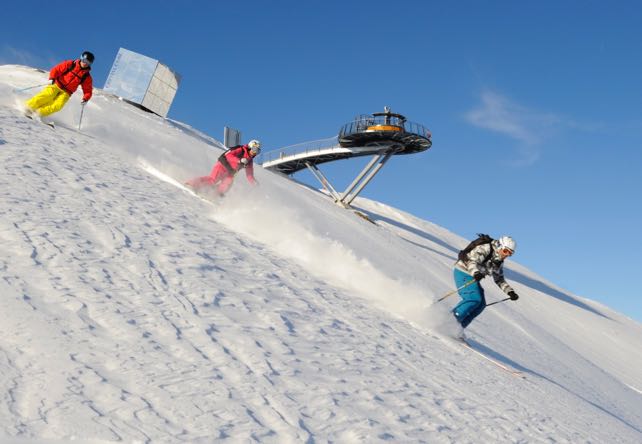
Michi Freymann knows a thing or two about steep ski runs. Raised in the Alpine city of Innsbruck, the former ski racer went on to be a freerider and ski tester – before founding SPURart, the build-your-own-skis company. Here, he profiles five of the most challenging pistes and ski routes in the Tirol – the mountain province in Austria in which he still lives.
Do you fancy yourself as an accomplished piste skier? Are you bored of cruising easy intermediate runs? Then point your skis down one of these slopes. Because here in the Tirol, when we say a piste or a ski route is steep, we really mean it.
Harakiri: Mayrhofen
https://www.youtube.com/watch?v=dL6_h_ba_C0
It starts deceptively, with a gentle stretch of snow that wouldn’t trouble a beginner. But then you reach a wind-scoured lip, and Harakiri in Mayrhofen suddenly disappears. The drop is so precipitous that when you look down, you can’t actually see the middle section. There’s a 50m preview at the top, and an easy run-out at the bottom. But the rest is hidden from view.
Don’t panic. There’s no denying it’s steep. The maximum gradient is mind-scrambling 78% – a pitch no normal person would ever attempt to walk down, let alone ski. It’s often hard-packed and icy too. But it is short. The critical section is only three or four turns long. “There are two things I always tell skiers if they’re planning to tackle it,” says Helga Pope, a British ski instructor from Dorset, who teaches at the Skischule SMT Mayrhofen. “First, don’t look straight down the slope. After all, you’re not a ski racer. You won’t be skiing straight down it: you’re going to be making turns across it. Second, don’t stop on the steep bit. If you do it’s very hard to get started again.”
Karrinne: Nordkette
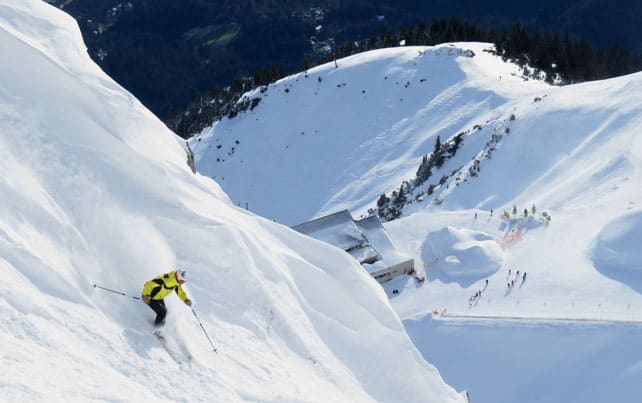
You don’t need avalanche safety equipment to ski Karrinne. It’s classed as a ski route and protected against avalanches by blasting. But you do need a head for heights, because the view from top will turn your thoughts upside down. The slope drops away beneath your ski boots, and doesn’t let up until it reaches the streets of Innsbruck. If you fall, it seems like you won’t stop sliding till you’re lying on your back in Maria-Theresien-Strasse, surrounded by baffled shoppers.
Stick with it. Yes, the first few turns in the chute at the top are steep, but once you get half-way down, the slope relents just a little, and when there’s powder, even moderately competent off-pisters will enjoy five or six turns of pure heaven. (Bear in mind, however, that when the snow’s in poor condition, or covered in moguls, it’s a much tougher proposition.)
Just be sure to get up there early if it’s been snowing. “In Innsbruck, everybody knows that if they hear blasting on the Nordkette at 7am, there’s more than 30cm of fresh snow,” says former pro-freeskier Quirin Müller of the Nordkette’s lift company. “That’s because we have to blast at 17 different points along the ridge to clear the avalanche danger. It’s a signal for everyone to get their skis out.” As a result, the queues to get on the first cable car can be as epic as the skiing.
Direttissima: Serfaus
https://www.youtube.com/watch?v=2Sipq5XUfbs
Here’s one for Mum and Dad when the kids are in ski school. The ski area at Serfaus-Fiss-Ladis may have a family-friendly reputation: but it’s peppered with more challenging slopes, if you know where to look. None is more thrilling than the Direttissima black, at the top of the 2596m Zwölferkopf.
The appeal is obvious. “When you are at the top of the Direttissima you can see all the way down to the village of Fiss,” says ski instructor Johannes Rietzler of the Skischule Fiss-Ladis. The piste doesn’t go the whole way down, but it does drop through 600 vertical metres – and with an average pitch of 70% it’s a sustained challenge. “It’s the perfect steepness for high intermediates and experts,” says Rietzler.
How to ski it? “Direttissima faces south, and gets a lot of sunshine,” says Rietzler, “so you should tackle it in the morning, when it’s freshly-groomed. In the afternoon it can be chopped up and bumpy.” The other trick is not to spend too long at the top. That’s the steepest part of the slope, and combined with the top-to-bottom view, it has an intimidating effect. “The longer they wait, the more nervous many skiers become,” says Rietzler. “So get started straight away, and make sure you’re always in control of your speed.”
The Fang: St Anton
https://www.youtube.com/watch?v=cxTB3ljMfEs
There’s a special thrill that comes from skiing off-duty World Cup race tracks. Not only are the routes they follow superb. You also get to marvel at the iron-willed determination of modern ski racers as you go. These slopes are steep and – on race-day – covered in rock-hard snow. Competitors fly down them with barely a turn.
The Fang in St Anton is a classic. The scene of the upcoming Kandahar race weekend on January 12-13, 2019 it’ll host both the women’s Downhill and Super-G, and offers a twisting, ever-changing line down the mountain – complete with several wide-eyed, oh-my-God moments. Marked number 34 on the piste map, it’s the steepest groomed piste in the resort, with even steeper off-piste variant, known as the Eisfall.
For accomplished leisure skiers, the key to a good experience is timing. “In the middle of winter, when the snow is soft and cold, you should be the first up on Gampen in the morning to ski this run,” says Patrick Bätz of the Arlberg Ski School. “But be careful and stay in a nice, controlled position, because it gets steep and very fast!” In spring, however, Bätz suggests you wait – because the snow may well have refrozen overnight. “Just as the sun starts to soften the surface of the snow, that’s the moment to ski it.”
Alpe Seite: Westendorf
https://www.youtube.com/watch?v=B4Y80TTn4Dw
The Skiwelt is not famous for its steeps. Most know it as a giant, intermediate-friendly playground, full of broad, confidence-boosting blues and reds. There are some beauties amongst them, too: notably a top-to-bottom red piste called the Kandler, which unfurls down the north face of the Choralpe, and offers turn after joyous turn through 1,000 vertical metres.
But if you ski over to the Choralpe’s western face and you’ll find a rather different run. Piste 112, “Alpe Seite” is what the locals call a “deep black” – a straight-down-the-mountain spectacular which has a maximum gradient of 80%. “The right-hand side of the piste is steepest,” says Peter Kofler, a director of the Skischule Aktiv in Brixen. “And it’s pretty long – about 300-400m.”
Experts will love its plunging line, and for them, Kofler advises “really small turns, trying to to keep your speed the same from the top to the bottom so you don’t accelerate and lose control.” By contrast, he says less advanced skiers should ski “longer turns, with a lot of traversing across the slope.” He also suggests allowing the skis to slip downhill a little as you go, so you lose height more quickly. “That way, you don’t have to make so many turns to get through it.”
And if you’re the kind of skier who’s only really happy on intermediate pistes? Kofler’s counsel is straightforward. “Don’t ski the Alpe Seite.”










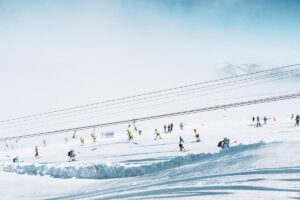
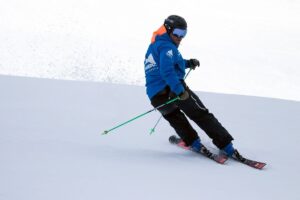
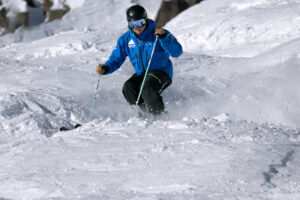
Add Comment